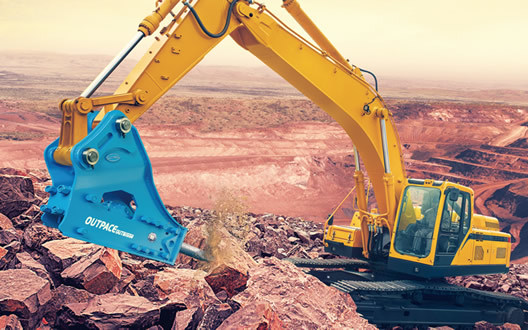-
About Us

-
-
-
The correct working method of the crushing hammer
Shenjia Hydraulic
Release time:
2023-08-21
In order to effectively crush, the crushing hammer should apply appropriate puncture force. If the breakdown force is insufficient, the hammering energy of the piston will not be able to effectively crush stones; The reaction force of the hammering force will be transmitted to the crushing hammer body, the large arm of the excavator/loader, etc., thereby damaging these components.

1) Appropriate breakdown force
In order to effectively crush, the crushing hammer should apply appropriate puncture force. If the breakdown force is insufficient, the hammering energy of the piston will not be able to effectively crush stones; The reaction force of the hammering force will be transmitted to the crushing hammer body, the large arm of the excavator/loader, etc., thereby damaging these components.
On the other hand, when the excavator/loader boom is lifted, if the breakdown force is too high and the crushing operation is carried out, the machine may suddenly tilt at the moment of the gravel, causing the crushing hammer to hit the stone fiercely, causing damage to the crushing hammer. In this situation, when carrying out the striking operation, the vibration will also be transmitted to the excavator's tracks and wheels. It is necessary to avoid working in this situation.
So during the striking operation, always pay attention to the breaking force of the hammer, and do not work when the breaking force is not suitable.
2) Direction of breakdown
The direction of breakdown should be in line with the steel braze. When the steel drill breaks rocks, it should be kept vertical for operation. If the hammering direction is tilted, the steel drill may slip off during hammering operation, causing the steel drill and piston to break or get stuck. So when carrying out crushing operations, the puncture point should be selected properly, so that the steel drill can ensure stable hammering during hammering operations.

Mobile website
Service Hotline:
400-600-6670
Tel:
Address:
Sijin Industrial Zone, Baidian Town, Hai'an City, Jiangsu Province
Copyright©2023 Jiangsu Hehai Group Co., Ltd. | SEO




